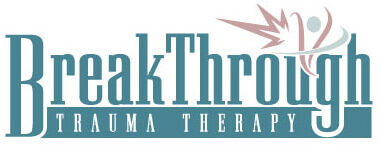Post-traumatic stress disorder (PTSD) is a mental condition that  occurs after experiencing or witnessing a traumatic event. The brain develops anomalies when recording the trauma, creating false alarms whenever it picks up sensations relating to the event. Traumatic incidents could be in the form of sickness, abuse, robbery, accident, or the death or suffering of a loved one.
occurs after experiencing or witnessing a traumatic event. The brain develops anomalies when recording the trauma, creating false alarms whenever it picks up sensations relating to the event. Traumatic incidents could be in the form of sickness, abuse, robbery, accident, or the death or suffering of a loved one.
Your brain has a natural system that responds to stress – even traumatic stress – known as the stress response. It is commonly called anxiety or the fight or flight response. The physiological reaction enhances survival by protecting you from danger or perceived threats. PTSD occurs because of an overreactive stress response.
The Stress Response Mechanism
The stress response begins in the amygdala, otherwise known as the stress processing center. The amygdala receives all internal and external sensations and interprets and attaches meaning to them. Once it detects danger, it signals the hypothalamus, the brain’s command center, to launch the stress response.
The hypothalamus initiates a series of events that stimulate the release of adrenaline from the adrenal glands found in the kidney. Adrenaline is a primary stress hormone that promotes physiological processes that release energy for fight or flight. The stress hormone,
- Enhances your breathing rate to boost oxygen intake – that’s why you feel like you cannot catch your breath when you are scared or anxious.
Increases your blood pressure to expedite oxygen transportation to the brain and muscles – the brain and muscles use oxygen to burn glucose and produce energy to think quickly and act swiftly. - Raises your heartbeat rate to increase the blood flow rate to the brain and muscles – that is why you may feel like you are about to have a heart attack during this response.
Adrenaline works with cortisol, a glucocorticoid hormone whose primary role is mobilizing the release of stored glucose in the body. Cortisol also suppresses other bodily systems to keep you focused on the threat. For instance, it inhibits activity in the gut by emptying it, which makes you feel nauseous, triggering you to empty partially digested foods. It also triggers diarrhea, constipation, or urine release.
The surge in energy is commonly known as the adrenaline rush. It helps you evade oncoming traffic or get your hand off a burning stove within seconds. The two stress hormones sustain the stress response as long as the amygdala continues to perceive or interpret danger. However, sometimes, the distress initiated by the amygdala is too much for the brain to handle, creating irregularities in interpretation, emotion priming, storage, and retrieval.
How PTSD Develops
The amygdala does not work alone in the stress response. It coordinates with the prefrontal cortex and the hippocampus.
- The amygdala sounds the stress alarm. It also forms and stores emotional memories.
- The hippocampus records and stores the events surrounding the distress call. It keeps information regarding the sights, sounds, touch, feelings, turmoil – everything about the traumatic event.
- The prefrontal cortex oversees your decision-making abilities, emotional regulation and interpretation, behavioral control, attention, reaction, and impulse control during the stress response.
Research shows PTSD alters the brain in these three areas. The amygdala develops a glitch in the initial traumatic exposure and creates distorted information concerning the event. It also convolutes the interpretation and emotional priming process. Unfortunately, the hippocampus stores the jumbled information.
 The amygdala also gets into a hypervigilant state, actively assessing threats and activates the stress response prematurely when there is no real danger. The prefrontal cortex becomes dormant, letting the fight or flight response go through the entire cycle without any logical intervention. The hippocampus’s faulty storage worsens the condition as it propagates the awareness of danger whenever the memory gets retrieved voluntarily, subconsciously, or through internal and external stimuli.
The amygdala also gets into a hypervigilant state, actively assessing threats and activates the stress response prematurely when there is no real danger. The prefrontal cortex becomes dormant, letting the fight or flight response go through the entire cycle without any logical intervention. The hippocampus’s faulty storage worsens the condition as it propagates the awareness of danger whenever the memory gets retrieved voluntarily, subconsciously, or through internal and external stimuli.
The alteration in brain activity also helps sustain PTSD.
- The overactive amygdala will activate the stress response from false alarms persistently.
- The distorted information from the hippocampus will continue to feed the amygdala with false triggers whenever a stimulus warrants memory retrieval.
- An underactive prefrontal cortex influences emotional dysregulation, irrational reasoning and behavior, and dissociative reactions.
Symptoms of PTSD
The DSM V manual lists the diagnostic criteria for PTSD for people aged six and older. After the traumatic exposure, the symptoms should persist for more than one month for a clinician to diagnose the condition as PTSD. The signs should also be severe enough to affect a person’s ability to function at work, at home, or at social events. The disturbances should not be a consequence of substance use.
Trauma Exposure
For anyone to suffer from PTSD, they must encounter trauma by witnessing or experiencing the event. The DSM V lists
- Directly going through the ordeal
- Seeing someone else go through a traumatic experience
- Learning about a violent or accidental incident of a loved one that either turned fatal or disastrous
- Repeated traumatic experiences like rape, abuse, violence, war, or first responders experiences
Intrusive Memories
Intrusive memories are involuntary mental imageries that trigger an intense emotional response. The recollections appear as though the threat is presently occurring, even when there is no danger.
- The recollections are uncontrollable and recurring. Children
 play out different aspects of the traumatic event.
play out different aspects of the traumatic event. - Frequent nightmares concerning the ordeal. Children may have nightmares without any plausible content.
- Dissociative reactions – occur as disconnections between the past ordeal and the present in thoughts and memory, and behavior. The trauma feels like a never-ending loophole that suppresses your awareness of the present and your immediate surrounding. The person can experience depersonalization, feeling like they are not part of their mental experience. Alternatively, they may go through derealization, where the event feels like a dream or distorted reality. Flashbacks are another example of these reactions. Children re-enact the traumatic experience persistently.
- Intense distress over triggers relating to or symbolizing the traumatic event
Avoidance
A person with PTSD proactively avoids or suppresses any triggers relating to the traumatic event. They will repress thoughts, feelings, and memories of the ordeal in an attempt to forget or avoid the effects of remembering the trauma. They also restrain arousal by avoiding people, places, conversations, activities, and situations that provoke those distressing memories, thoughts, and feelings.
Chronic Negativity Over the Traumatic Event
A person with PTSD only remembers selected aspects of the trauma – in an increasingly negative view. They also develop a negative outlook on life because of their experience. They will make statements like “do not trust men” or “my health is permanently ruined.”
The person has negative distortions of the traumatic experience. They assume responsibility for the ordeal. They take the blame and may punish themselves for the outcome or believe they deserve the consequences.
Self-blame breeds resentment, anger, shame, guilt, and shame. It makes them feel unworthy of happiness, satisfaction, or love. It also detaches the individual from others and makes it impossible for them to enjoy life.
Hyperarousal Over Events Relating to the Traumatic Experience
Overreaction to triggers of the ordeal begins after the experience and can worsen with time. It manifests as
- Irrational anger outbursts, flares, agitation, or aggression toward people or things – may occur without provocation or with a little incitement.
- Reckless living or destructive behavior – aimed at forgetting or masking the effect of the ordeal.
- Hypervigilance – actively searching for looming danger and misinterpreting stimuli as threats.
- An exaggerated startle response – an excessive involuntary reaction to stimuli relating to the traumatic event
Poor cognition – PTSD suppresses activity in the prefrontal cortex, limiting a person’s ability to focus, think, reason, or remember. - Sleep disturbances – inability to fall asleep or stay asleep. Restlessness prevails throughout the sleeping period.
Find Help
PTSD is a severe condition that alters the functioning of the brain. It also interferes with the quality of life, leaving people to become victims of their worst nightmares. Worse still, every re-exposure to the traumatic event fortifies the changes in the brain, validating the traumatic experience and wreaking havoc on your physical and mental well-being.
interferes with the quality of life, leaving people to become victims of their worst nightmares. Worse still, every re-exposure to the traumatic event fortifies the changes in the brain, validating the traumatic experience and wreaking havoc on your physical and mental well-being.
You do not have to carry the burden of your traumatic experience alone. A counseling psychologist can enable you to regain control of your mind and overcome the impact of the traumatic experience. Counselors use talk therapy and medication to treat PTSD.
Types of Therapy for PTSD
- Cognitive Behavioral Therapy (CBT) – deals with distorted thinking patterns about traumatic events, behavioral modification, and emotional regulation. It helps people with PTSD understand the sequential events of their ordeal, assign the correct meaning to their thoughts and emotions, manage triggers, and face their fears.
- Exposure Therapy – gradually exposes you to the traumatic event in a safe environment where you can apply skills and techniques taught in therapy to develop resilience, face your fears, and learn distress tolerance.
Medication
Counseling psychologists use antidepressants to treat PTSD to balance the brain chemicals and hormones that sustain the stress response. It is only by normalizing these biomolecules that any thought and emotional regulation is achievable in some conditions. Your counseling psychologist will determine the intervention suitable for your mental situation.
Click here for more on Trauma Therapy.

